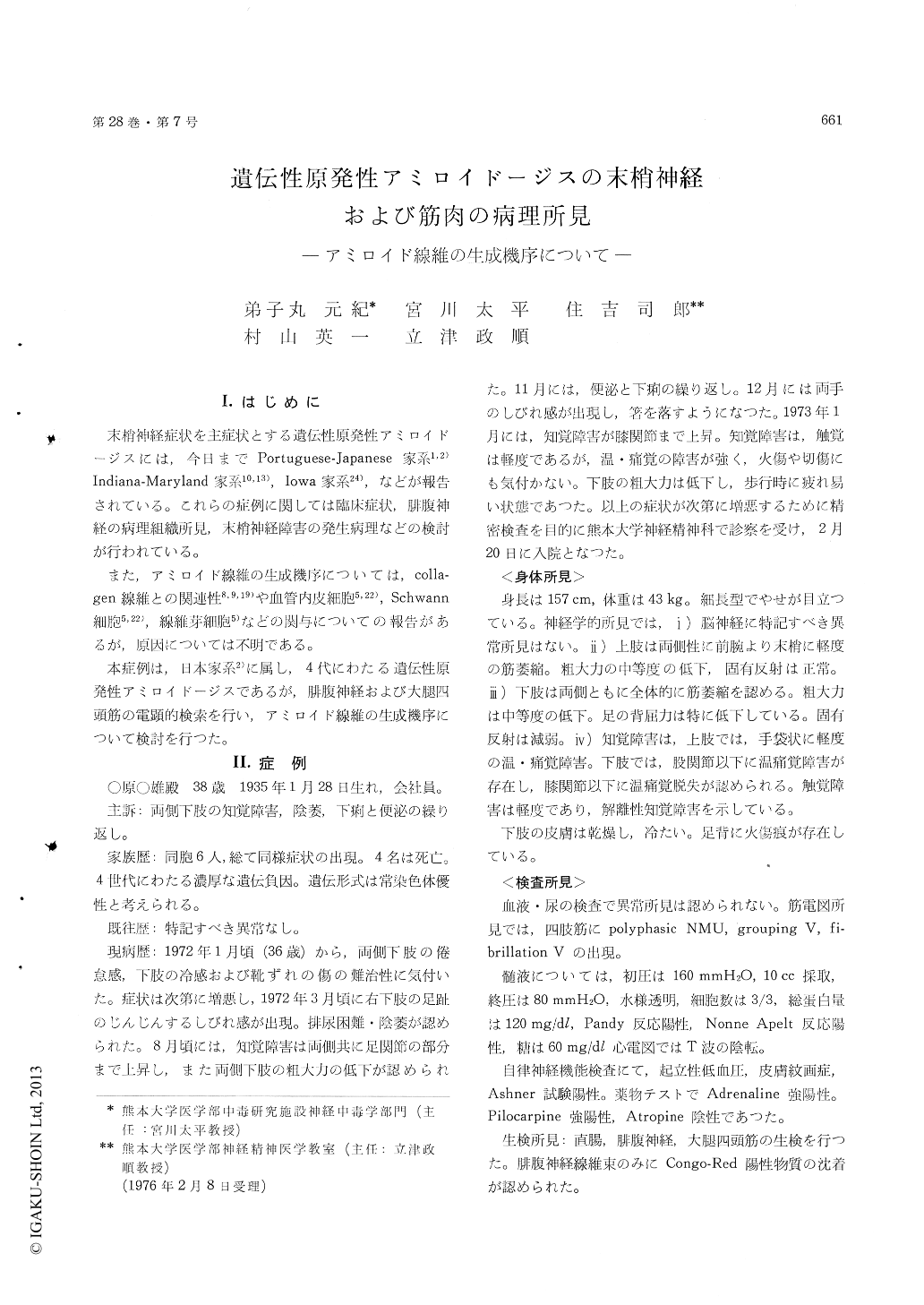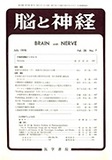Japanese
English
- 有料閲覧
- Abstract 文献概要
- 1ページ目 Look Inside
I.はじめに
末梢神経症状を主症状とする遺伝性原発性アミロイドージスには,今日までPortuguese-Japanese家系1,2)Indiana-Maryland家系10,13),Iowa家系24),などが報告されている。これらの症例に関しては臨床症状,腓腹神経の病理組織所見,末梢神経障害の発生病理などの検討が行われている。
また,アミロイド線維の生成機序については,colla—gen線維との関連性8,9,19)や血管内皮細胞5,22),Schwann細胞5,22),線維芽細胞5)などの関与についての報告があるが,原因については不明である。
T. I., a male aged 38, had a hereditary primary amyloidosis over four generation in his family history. He had peripheral neuropathy with dis-sociated sensory disturbances in the lower limbs, impotence, gastrointerstial dysfunction and ortho-static hypotention.
N. suralis and M. quadriceps femoralis taken from him were examined by light and electron micro-scopy. N. suralis contained a lot of amyloids re-acting with congo-red in the nerve fibres. Amyloid fibrils were remarkably observed around the blood vessels. They were continuous with the basement membrane of the endotherial cells. A few deposites were observed around the Schwann cell and fibro-blasts. In M. quadriceps femoralis, amyloid like fibrils were noted in the perivascular spaces. Es-pecially, a great deal of amyloid fibrils were con-tinuous with the basement menbranes. From this finding, it might be speculated that the basement membrane may play an important role in the pro-duction of amyloid fibrils.

Copyright © 1976, Igaku-Shoin Ltd. All rights reserved.


